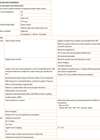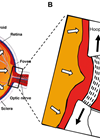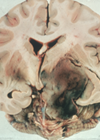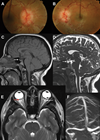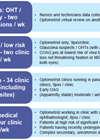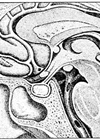Ophthalmology archive for 2017
Eye research: where next?
Eye research in the UK is underfunded relative to other areas of medical research and general awareness of sight loss and its prevention remains poor, messages that were reinforced in presentations and discussions during a recent research summit meeting in...
Optic nerve swelling – your survival guide (part 2)
In this second article we will discuss bilateral optic nerve swelling, its aetiology, various investigations and possible treatments. We will also discuss various protocols used in the management of suspected optic nerve swelling cases. (Part one of this topic available...
Could the sclera be key to glaucoma?
The glaucomas are a group of conditions characterised by optic neuropathy and associated visual field defects. Of these, chronic open-angle glaucoma (COAG) – diagnosed on the basis of progressive structural changes to the optic nerve head (ONH) and nerve fibre...
Considerations in the management of retinal disorders
Vision research presentations and publications explore practice considerations in the management of AMD and diabetic retinopathy. Over the past two decades in Europe there has been a decreasing prevalence of age-related macular degeneration (AMD) and an improvement in visual acuity...
Should we move towards procedure-specific consent forms?
The consent process represents the patient’s acceptance of the information provided to them and an agreement to undergo an intervention as suggested by a health professional. Effective doctor-patient communication, ensuring the succinct delivery of the necessary points in a way...
Pituitary tumours: why are they so often missed?
Part 3: Clinical features, assessment and management (see also Part 2, and Part 1) As previously mentioned in this treatise [1] pituitary tumours are common, occur in all age groups and can present with anything from minimal visual symptoms to...
Optic nerve swelling – your survival guide (part 1)
Assessment of optic nerve appearance and functions is a daily routine in neuro-ophthalmology. Following a recent high profile court case there has been a significant increase in the amount of referral to ophthalmology departments to assess the optic nerve and...
You want to do paediatric ophthalmology? Seriously?
Completion of Core Training is approaching fast and you begin to wonder three things. One, where do you want to live? Two, is anyone going to be retiring there soon? Three, what subspecialty do you want to do? In an...
Emerging developments in dry eye
An estimated 344 million people worldwide suffer from dry eye [1]. This chronic syndrome is characterised by a vicious cycle of tear film hyperosmolarity, tear instability and corneal stress, leading to increased friction, inflammation, ocular surface damage and decreased visual...
An update on idiopathic intracranial hypertension
The incidence of Idiopathic intracranial hypertension (IIH) is increasing, likely in line with the worldwide epidemic of obesity. To date, there have been revisions in the terminology used and diagnostic criteria for IIH; these recognise the need to exclude secondary...
Learnings and trends in the management of open-angle and angle-closure glaucoma
To be truly disruptive, newer technologies need to offer a quality of life benefit over medication to a broad population of glaucoma sufferers. Evidence and converging trends in medical and surgical management of glaucoma were explored in counterpoint discussions and...
Pituitary tumours: why are they so often missed?
Part 2: Clinical varieties, anatomical considerations and case report (see also Part 1 and Part 3) For ophthalmologists there are four types of pituitary tumour to be considered, three of which are named according to the hormone secreted, along with...



